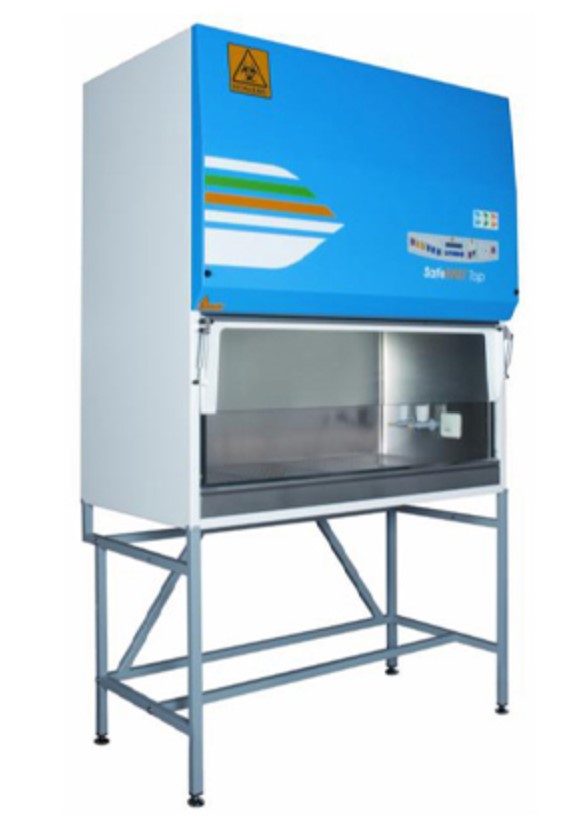Introduction to lab gas distribution systems

The Crucial Role of Gas Piping & Distribution Systems in Laboratory Safety and Efficiency
In the realm of scientific research and development, laboratories serve as the epicenter of innovation, where groundbreaking discoveries and technological advancements are made. These specialized environments demand a meticulous approach to safety and efficiency, with every aspect meticulously designed and implemented to ensure optimal performance. Among the critical infrastructure components that underpin the smooth operation of a laboratory is the gas piping and distribution system. This intricate network of pipes, valves, and regulators plays a pivotal role in delivering essential gases to various instruments and equipment, enabling a wide range of experiments and analyses.
The importance of a reliable and secure gas piping and distribution system cannot be overstated. It is the backbone of many critical laboratory processes, ensuring the safe and efficient delivery of gases that are essential for a multitude of applications. From the precise control of gas flow in analytical instruments to the generation of inert atmospheres for sensitive experiments, the performance and reliability of the gas distribution system directly impact the accuracy, reproducibility, and overall success of research endeavors.
However, the complexity of modern laboratory operations, coupled with the inherent risks associated with handling gases, necessitates a comprehensive understanding of the principles and best practices governing gas piping and distribution systems. This article delves into the intricacies of these systems, exploring their design, installation, maintenance, and safety considerations. By providing a comprehensive overview of this critical infrastructure, we aim to empower laboratory professionals with the knowledge and insights necessary to ensure the safe and efficient operation of their gas distribution systems, ultimately contributing to the advancement of scientific research and development.
The need for a robust and reliable gas piping and distribution system is driven by several key factors. Firstly, the safety of laboratory personnel is paramount. Gases used in laboratories can pose significant hazards if not handled properly. Leaks, ruptures, or improper ventilation can lead to explosions, fires, or exposure to toxic substances. A well-designed and maintained gas distribution system minimizes these risks by ensuring the safe and controlled delivery of gases to their intended destinations.
Secondly, the accuracy and reproducibility of experimental results are heavily reliant on the consistent and precise delivery of gases. Variations in gas flow rates, pressure, or purity can significantly impact the outcome of experiments, leading to unreliable data and compromised research findings. A reliable gas distribution system ensures that the gases delivered to instruments and equipment meet the required specifications, enabling researchers to obtain accurate and reproducible results.
Thirdly, the efficiency of laboratory operations is directly influenced by the performance of the gas distribution system. Delays or disruptions in gas supply can significantly impact the progress of experiments and research projects. A well-designed and maintained system minimizes downtime and ensures a continuous flow of gases, maximizing the productivity of the laboratory.
In addition to these core considerations, the growing complexity of laboratory research and the increasing use of specialized gases have further emphasized the importance of advanced gas piping and distribution systems. Modern laboratories often utilize a wide range of gases, each with its unique properties and handling requirements. The ability to safely and efficiently manage these diverse gas streams requires sophisticated systems that can accommodate the specific needs of each application.
The design and implementation of a gas piping and distribution system is a multifaceted process that requires careful planning and consideration of various factors. These include the types of gases to be delivered, the flow rates required, the pressure levels, the location of gas outlets, and the safety features to be incorporated. The system must be designed to meet the specific needs of the laboratory, taking into account the types of experiments conducted, the equipment used, and the safety protocols in place.
The installation of a gas piping and distribution system is a critical step that requires skilled technicians and adherence to industry standards. The pipes, valves, and regulators must be properly installed and tested to ensure leak-free operation and compliance with safety regulations. Regular maintenance and inspections are essential to ensure the continued reliability and safety of the system. This includes checking for leaks, inspecting the condition of pipes and valves, and calibrating pressure regulators.
In conclusion, the gas piping and distribution system is an essential component of any modern laboratory, playing a crucial role in ensuring safety, efficiency, and the accuracy of research findings. By understanding the principles and best practices governing these systems, laboratory professionals can optimize their operation, minimize risks, and contribute to the advancement of scientific knowledge.
The Crucial Role of Gas Piping & Distribution Systems in Modern Laboratories
In the realm of scientific research and development, laboratories serve as the bedrock of innovation, where groundbreaking discoveries and technological advancements are meticulously crafted. At the heart of these laboratories lies a critical infrastructure that often goes unnoticed yet plays a pivotal role in ensuring the smooth operation and safety of experiments: Gas Piping & Distribution Systems. These systems are the lifeblood of many scientific endeavors, providing a reliable and controlled supply of essential gases that are indispensable for a wide range of applications.
From the precise synthesis of novel pharmaceuticals to the intricate analysis of biological samples, the use of gases in laboratories is ubiquitous. These gases, ranging from inert gases like nitrogen and helium to reactive gases like oxygen and hydrogen, are employed in a multitude of processes, including:
- Gas Chromatography (GC): GC is a powerful analytical technique used to separate and identify different components in a mixture. Carrier gases like helium and nitrogen are essential for transporting the sample through the GC column, enabling the separation and detection of individual compounds.
- Mass Spectrometry (MS): MS is another indispensable analytical tool that determines the mass-to-charge ratio of ions, providing valuable information about the composition and structure of molecules. Inert gases like helium and argon are often used as ionization gases in MS systems, facilitating the generation of ions for analysis.
- Atomic Absorption Spectroscopy (AAS): AAS is a sensitive technique used to determine the elemental composition of samples. Acetylene and nitrous oxide are commonly used as fuel and oxidant gases in AAS instruments, generating a high-temperature flame that atomizes the sample for analysis.
- Inductively Coupled Plasma Atomic Emission Spectrometry (ICP-AES): ICP-AES is a versatile technique for elemental analysis, employing an inductively coupled plasma (ICP) to excite atoms in a sample. Argon gas is the primary gas used in ICP-AES systems, serving as the plasma gas and carrier gas for the sample.
- Cell Culture and Tissue Engineering: In cell culture and tissue engineering applications, controlled atmospheres are often required to maintain optimal growth conditions. Gases like oxygen, carbon dioxide, and nitrogen are carefully regulated to mimic the physiological environment for cells and tissues.
- Laser Applications: Lasers, widely used in scientific research and industrial applications, often rely on specific gases for their operation. For example, carbon dioxide lasers utilize carbon dioxide gas as the lasing medium, while helium-neon lasers employ a mixture of helium and neon gases.
The importance of Gas Piping & Distribution Systems in laboratories cannot be overstated. These systems ensure the safe and reliable delivery of gases to various instruments and equipment, enabling scientists to conduct experiments with precision and accuracy. A well-designed and maintained gas distribution system is crucial for:
- Safety: Gas cylinders can pose significant safety hazards if not handled properly. Gas distribution systems provide a secure and controlled means of delivering gases to instruments, minimizing the risk of leaks, spills, and explosions.
- Reliability: A reliable gas distribution system ensures a continuous and uninterrupted supply of gases to instruments, preventing downtime and delays in experiments.
- Purity: Gas distribution systems are designed to maintain the purity of gases throughout the delivery process, preventing contamination and ensuring accurate results in experiments.
- Efficiency: By centralizing the storage and distribution of gases, gas distribution systems streamline laboratory operations, reducing the need for multiple gas cylinders and improving overall efficiency.
- Flexibility: Gas distribution systems offer flexibility in terms of gas selection and flow rates, allowing scientists to adapt to changing experimental needs.
The design and implementation of Gas Piping & Distribution Systems require careful consideration of various factors, including:
- Gas Type: The type of gas to be distributed will determine the materials used for piping, valves, and other components. For example, corrosive gases may require special materials to prevent corrosion.
- Flow Rate: The required flow rate of each gas will influence the size and configuration of the piping system. High-flow applications may require larger diameter pipes and higher pressure ratings.
- Pressure: The pressure at which gases are delivered will determine the pressure rating of the piping system and the type of valves used.
- Safety Features: Safety features such as pressure relief valves, shut-off valves, and alarms are essential for preventing accidents and ensuring the safety of personnel.
- Accessibility: The gas distribution system should be designed for easy access and maintenance, allowing for regular inspections and repairs.
- Compliance: Gas distribution systems must comply with relevant safety regulations and industry standards, ensuring compliance with local and national codes.
The design and installation of Gas Piping & Distribution Systems are best left to experienced professionals who have a deep understanding of gas handling practices and safety regulations. IT tech, a leading provider of lab consumables and equipment, offers comprehensive solutions for Gas Piping & Distribution Systems, ensuring the safe, reliable, and efficient delivery of gases to your laboratory. Our team of experts can assist you in designing, installing, and maintaining a gas distribution system that meets your specific requirements and exceeds industry standards.
In the next section, we will delve deeper into the different types of Gas Piping & Distribution Systems, exploring their unique features, advantages, and applications. We will also discuss the importance of proper maintenance and safety protocols to ensure the longevity and reliability of your gas distribution system.
Products You may Like
Check out other IT- Tech product that suit your taste
Subscribe to our newsletter
Stay updated with IT-Tech Insights
Related posts
Check out other IT- Tech Scientific Resources

Comparing lab electrical power configurations
Choosing the right electrical power configuration is crucial for any research laboratory. This article delves into the different types of systems available, including single-phase, three-phase, and uninterruptible power supplies (UPS). We discuss the pros and cons of each system, emphasizing safety protocols and best practices for efficient power management. By understanding the nuances of lab electrical power configurations, researchers can ensure a reliable and safe environment for their experiments.

troubleshooting-lab-flooring-and-surface-damage
Lab flooring and surfaces are subjected to constant wear and tear from chemicals, spills, heavy equipment, and foot traffic. This can lead to damage that affects the safety and functionality of your lab. This article will guide you through the process of troubleshooting common flooring and surface damage, including identifying the causes, assessing the severity, and choosing the appropriate repair or replacement solutions. We'll cover topics such as cracks, stains, scratches, and delamination, providing practical tips and advice to help you maintain a safe and efficient lab environment.

Selecting emergency lighting and alarms
Selecting the appropriate emergency lighting and alarms is essential for ensuring the safety of your lab personnel and equipment in the event of a power outage or other emergency. This article provides a comprehensive guide to help you make informed decisions. Key considerations include compliance with relevant electrical safety regulations, the specific requirements of your lab environment, and the availability of backup power sources. We discuss factors such as the type and intensity of lighting required, the placement and activation of alarms, and the integration of these systems with other safety protocols. By carefully evaluating these factors, you can select emergency lighting and alarms that provide optimal safety and peace of mind for your lab.













































































